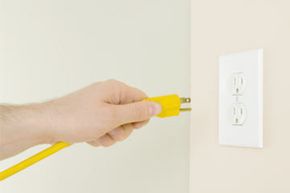Want to stump your roommates, spouse or kids? Ask them to guess how many electric gadgets or appliances are plugged in throughout your home right now. It's an interesting exercise, and if you break it down room by room, you can probably come up with a pretty decent estimate.
There are the refrigerator, coffeemaker, dishwasher, stove, microwave, toaster and cordless phone in the kitchen; then you have the TV, DVD player, cable or satellite box, DVR, gaming console, lamps, and stereo equipment or iPod docking station in the family room; not to mention the computer, printer, cable modem, wireless router, and various phone and mobile device chargers in the office or study. And don't forget the all of the other things in the bedrooms, bathrooms, laundry room, garage and basement.
Advertisement
Even when we power down for the night, we hear the constant hum of the fridge and the click of the HVAC kicking in. After turning off the bedside lamp, we glance one last time at the glowing display on the clock radio to make sure the alarm is appropriately set. It's only when a power outage throws us into sudden pitch-black silence that we understand just how quiet and dark it isn't most of the time.
Until recently, most of us assumed that we were doing our part to save electricity by setting the A/C a few degrees warmer or remembering to turn off the light switch whenever we left a room. But even as we make the effort to lower our electric bills and reduce our carbon footprints by investing in compact fluorescent light bulbs (CFLs) and other energy-saving products, we're being warned about phantom power and the hidden energy costs of all those appliances we thought we turned off.
Just how much power do our gadgets consume when we aren't even using them? And how much money can you really expect to save by unplugging appliances? Let's take a look.
Advertisement
